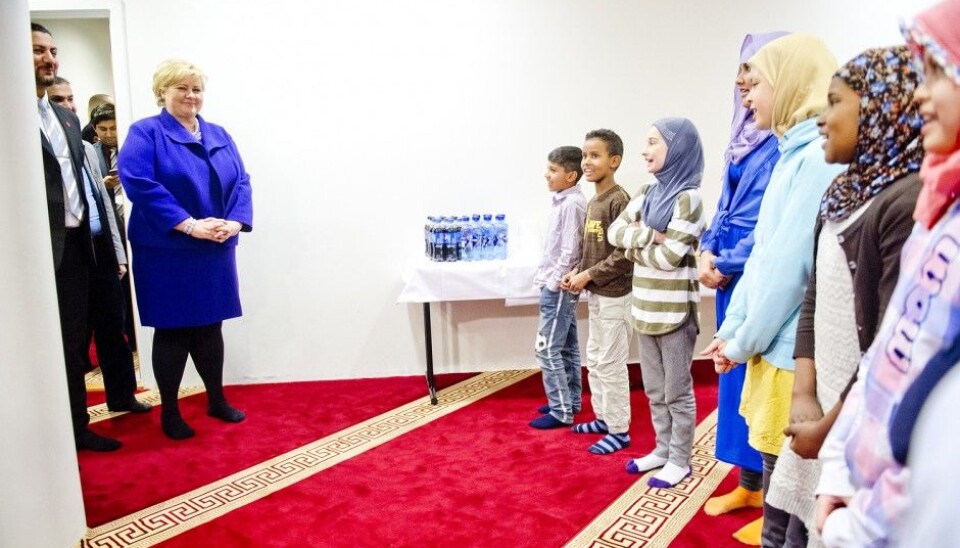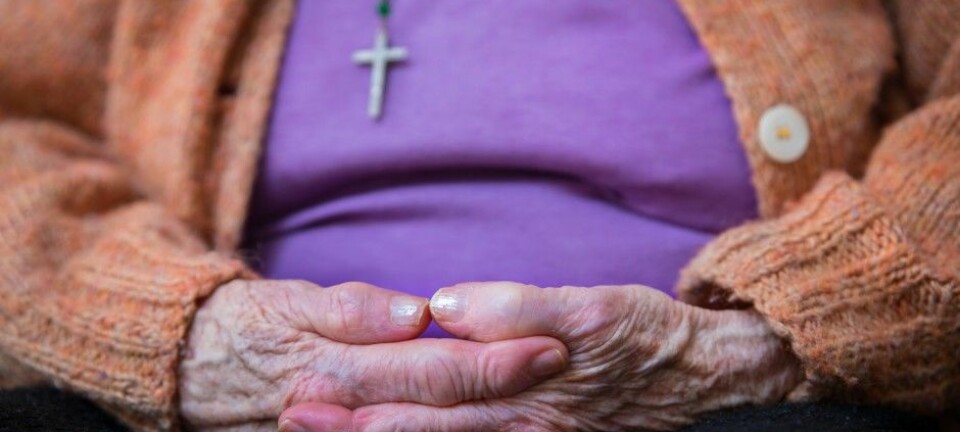
Future features young Muslims and old Buddhists
Buddhists will comprise the religious segment with the largest share of elderly in 2050, predict demographic researchers. Muslims will on average still be the youngest religious population in the world, but the median age of Muslims living in Europe will rise.
If population developments continue as predicted, by mid-century there will be more atheists among the world’s elderly.
A new study based on religious demographics from 2010 attempts to predict the world picture 33 years from now. Vegard Skirbekk of the Norwegian Institute of Public Health and international colleagues have collected 2,500 sources from 198 countries ― crunching numbers from surveys, censuses and national registers.
The world’s population is getting older. This means the median age of religious followers is increasing. Birth rates have fallen in many countries and regions, eroding the basis for recruitments of new generations of believers.
Another factor is that younger generations can tend to be less religious than their parents and grandparents.
So in 2050 some religions will be more dominated by members over the age of 60 than others, according to the researchers’ estimates.
Christian segment slowly older
While the median age of Jews was the oldest in 2010, Buddhists will be the most senior religious group in the future. People with no registered religious affiliation or beliefs will join them in this context. The median age in both will rise from 34 years in 2010 to 46.
The researchers calculate the median age by taking all the ages of the persons in a group and finding the number closest to the middle.
In Europe the highest median age is the oldest, about 45 years.
But globally Christians are rather junior in this sense, especially because of all the young Christians in Africa. By mid-century the median age of Christians worldwide will rise from 29 to 35. In 2050 they will comprise about a fifth of the world’s population of elderly over the age of 60. They will still be in the clear majority in Europe.
Muslims have the lowest median age in the world, rising to about 33 in 2050 from 23 in 2010. Muslims residing in Europe are older, with a median of about 40.
More atheists in nursing homes
Disparate ageing rates in the groups will change the religious landscape.
The most obvious consequence is that religions will die out in the long run if they fail to gain new recruits.
The researchers also see that nursing homes will be encountering new demands. Non-religious people are a rapidly growing segment of the elderly. In Europe their ranks will in the 80+ age group will nearly double from 11 percent to 20 percent.
Norwegian researchers in nursing think religion and faith should be given a more natural place in care of the elderly.
While some suggests spiritual matters should be given more leeway in the health services, Skirbekk and colleagues think that the rising numbers of non-believers in nursing homes and care for the elderly might call for plans in the other direction.
Muslims are youngest
Muslims have the most children, whereas Buddhists and atheists in Asia are having fewer. This is salient because children tend to take on their parents’ religions, philosophies and ways of thought.
Buddhists and the religiously unaffiliated will be getting the biggest shares of elderly. Every third Buddhist will be over the age of 60 in 2050. By comparison, Muslims’ share of the elderly over 60 will be just half that, at 16 percent.
This does not mean that Buddhists will have a larger share of the total elderly population. On the contrary, this group will be relatively smaller because there will be increasingly more persons over 60 belonging to other religions.
Although Muslims comprise the group that will still have the youngest followers there will be a rising number of older ones. This growth will come in Asia especially. In Asia the researchers figure 25 percent of the elderly between 50 and 69 years will be Muslims, as compared to 17 percent seven years ago. The share of Buddhists will drop from 17 percent to 12 percent.
In Europe the share of persons aged 60 to 79 who are Muslims will rise from 3 percent in 2010 to 8 percent in 2050.
Less popular
The rising median age of Buddhists could indicate that they are becoming less popular, at least in the USA where a study confirms that birds of a religious feather flock together.
Another issue is that those who responded to the survey were less disposed to liking the elderly than the young.
The researchers suggest this could make unpopular religions get all the more frowned upon as their followers take on more wrinkles.
In general American opinion, the hierarchy of religions, starting from the top, is as follows: Christianity, Judaism, Hinduism, Buddhism and Islam.
--------------------------------------
Read the Norwegian version of this article at forskning.no
Translated by: Glenn Ostling
































